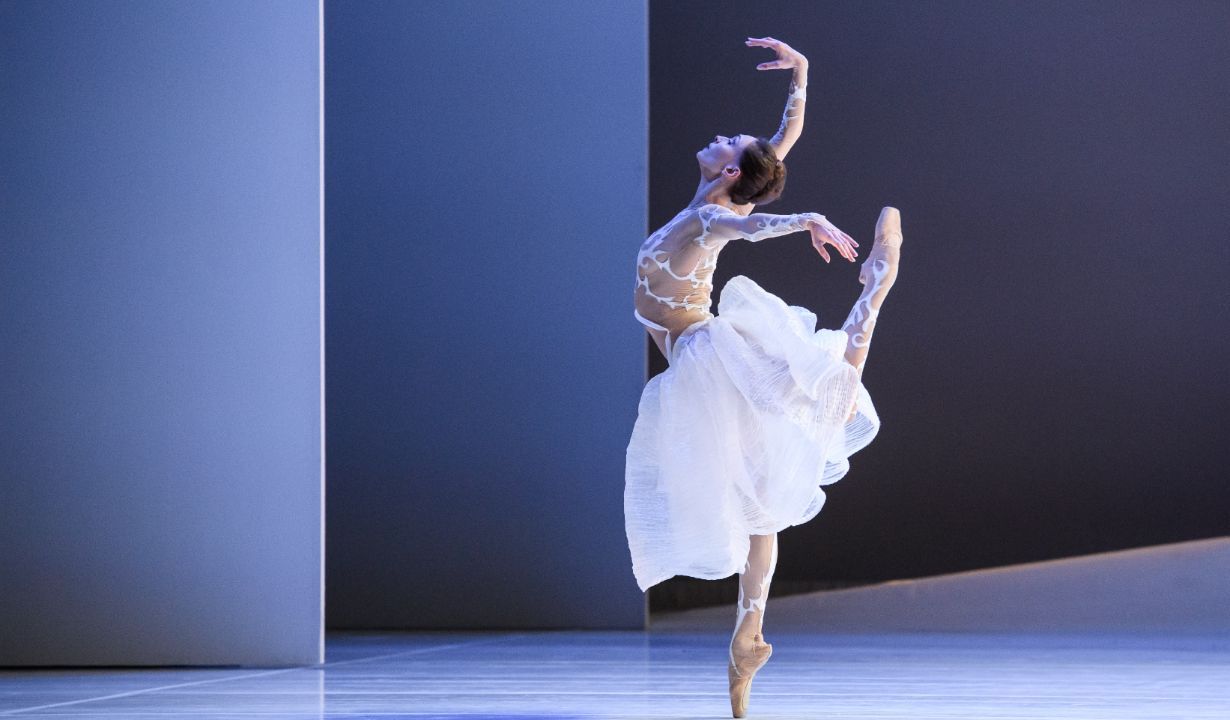For ballet enthusiasts who are looking for a radically different version of The Sleeping Beauty, then Jean-Christophe Maillot’s 2001 creation La Belle for Les Ballets de Monte-Carlo will almost certainly satiate an appetite for the unusual. It still draws on a distinctive but classical vocabulary and is technically challenging for all the cast, yet it’s unconventional and full of surprises.

Maillot has been a prolific choreographer during his long career, totalling more than 80 works, of which nearly 40 have been created for the Monte-Carlo-based company, where he has been artistic director for 30 years. He is the recipient of numerous international awards and some of his best known ballets, such as Romeo and Juliet and The Taming of the Shrew, have been staged around the world. By his own admission, his choreography is not an archive, but an exercise in evolution, whereby he changes the production to move with the times.
It seems he is also a master of collaboration. The sets, designed by Ernest Pignon-Ernest, are simple and timeless. Costumes by Philippe Guillotel and Jérôme Kaplan are striking and occasionally, outrageous. Dominique Drillot’s lighting is both atmospheric and dramatic and captures each mood with surreal exactitude.
In a reversal of the traditional storyline, the first act very much belongs to the Prince (Alexis Oliveira). It is set in the Prince’s universe; his mother, the Queen, is the evil Carabosse (Jaat Benoot) and his father is a rather hen-pecked King (Matèj Urban). As one would expect, Carabosse rules the roost, intimidating both her husband and son. The first act depicts scenes in which The Lilac Fairy (Laura Tisserand) describes a parallel universe to the Prince, enlightening him and giving him hope, channelled in a crystal ball.
Another Royal couple (Marianna Barabas and Alvaro Prieto) are despairing because they cannot conceive a child. They are surrounded by particularly fertile couples, conspicuously pregnant and cavorting around in a series of bawdy and frivolous duets. The costumes for Les Pétulants are worthy of comment: brightly coloured, the women have balloons for bellies and display breasts that look cosmetically enhanced, devoid of natural movement or gravitational pull, and brazenly showing a plastic version of flesh and nipples. If this is a distraction, and could be construed with a feminist’s mindset as degrading the female form, I prefer to view it as an entertaining episode where the women are celebrated for their beauty and fecundity.
The bubble, the balloon and the spherical shape appear often in this production and never has the expression, “the bubble has burst” been reflected in such a variety of ways. In this other universe, The Lilac Fairy manages to magically impregnate the Queen, whose pregnancy is displayed via an increasingly growing bubble on top of her crown. This, rather amusingly, bursts and she gives birth to a daughter (La Belle of the title) who grows up in an oversized bubble, protected from the outside world.
Act 1 foretells the future clearly and while it contains some vivid moments, the ballet is dominated by the sheer beauty of the pas de deux in both Acts 2 and 3, and by believing in the love that the two main characters project so strongly. Olga Smirnova as La Belle descends a ramp, encased in her protective bubble. At first one wonders how on earth she will manage the manoeuvre, but Smirnova is majestic in her negotiations. There is a disturbing scene where a group of young men, Les Prétendants, engulf her, deflating her spherical fortress. One assumes that she is aggressively violated, robbed of her skirt and deflowered, then left in a heap for her parents to try and understand this monstrous event. Carabosse is among the throng with her needle to hand. Thus La Belle, quite rightly, needs to sleep for one hundred years in order to recover from her ghastly experience.
The Lilac Fairy is up to speed and leads the Prince from his universe to the alternative, to find the beautiful woman he has been watching in his crystal ball. The awakening duet contains the longest ever on-stage kiss (even longer than the one in Angelin Preljocaj’s Le Parc, I’m told). If that might seem pretentious, it couldn’t be less so. It’s enchanting, fresh, superbly choreographed and emotionally satisfying. In the final pas de deux, which is danced to Tchaikovsky’s Romeo and Juliet and 1812 Overture, the drama and passion is absolutely riveting.
At this performance, Smirnova and Oliveira were saturated in physical and psychological attraction, a convincing rapport that transported the audience into their world. The entire company embraced the production with gusto and commitment and all the featured roles were superbly executed. Jaat Benoot as Carabosse was worthy of a ‘ballet’ Oscar and at the conclusion of the evening, it felt very much as if one had witnessed a Beauty for our times, one that didn't lose a thing by modernising the concept. And while the recorded music was of excellent quality, I inevitably miss the presence of a live orchestra.
Deborah's trip to Monte Carlo was sponsored by Les Ballets de Monte-Carlo


